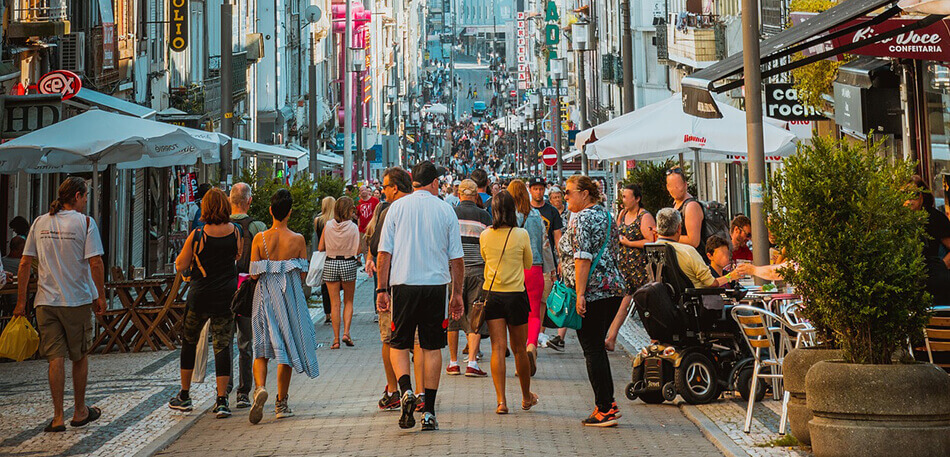A post-Covid high street

Many high streets across the UK have been struggling for a long time. A rise in out of town shopping centres over the last few decades, together with a more recent growth in online shopping habits has drawn people away from town centres, which are no longer seen as being so convenient and flexible for shopping. Covid-19 has been the final nail in the coffin for many high streets. Thousands of job cuts by national retailers have become a common news headline in the past few months, which will force many more shops across the country to close.
For the boarded up shops currently scattered across our high streets, planning permission would have generally been required to change the premises to a different use such as a restaurant. Most Councils have persisted with quite rigid and inflexible policies which protect retail units and floorspace in a vain attempt to retain the vitality of town centres, making the whole process of change to more viable use notoriously difficult and lengthy. Instead of increasing vitality such policies have led to vacant retail units standing empty for a long time, further sterilising our high streets.
It seems that this post-Covid outlook has forced the Government into action, with a huge wave of de-regularisation of the planning system announced last week and the introduction of a new commercial use class – Class E. This groups together certain uses including shops, restaurants, offices and gyms and means that buildings will be able to change freely between these uses without requiring planning permission. The Government has said this is "primarily aimed at creating vibrant, mixed use town centres by allowing businesses greater freedom to change to a broader range of compatible uses which communities expect to find on modern high streets, as well as more generally in town and city centres."
So what will these changes mean for our high streets?
One of the first things we are likely to see in the short term is vacant units being brought back into use relatively quickly. Businesses will no longer have to wait for the Council to determine whether a change of use is acceptable. Additionally, vacant units will now be able to attract a wider range of new prospective tenants (anything falling within the new Class E), meaning the prospects of letting these premises will be enhanced.
In the longer term, the de-regularisation of our high streets will shift the power from Councils to market forces; a common theme among this government’s interventions to PD rights since 2013. This is likely to see a wider range of uses in our town centres, especially those which currently have more of a retail function. Different uses will attract different types of people at different times of the day, which will activate, enliven and stimulate our town centres, many of which had become quite soulless places. Alongside recent measures to help ease coronavirus restrictions including the pedestrianisation of busy high streets and the encouragement of outdoor seating, this will create attractive destinations where people will want to spend time.
As well as seeing a broader mix of uses within our high streets, the changes will enable businesses themselves to become more flexible. Retail units will no longer be bound by the ‘A1’ label attached to them. Instead, they will be able to operate without having to define exactly what they are doing. Businesses will be able to diversify and perform a completely different function as the day goes on. This will enable them to respond to changing consumer behaviour, including a huge surge in flexible working patterns. This is likely to continue in the coming months as people become more comfortable leaving their homes but do not relish the long commute to the office. This, again, will bring higher footfalls to our town centres during the day, which will in turn revitalise and support the businesses there.
Of course alongside these benefits are a whole host of challenges and unintended consequences which come with the de-regularisation of a system which has been in place for decades. This includes the compatibility of uses and the lack of control from Councils which means that, hypothetically, Oxford Street could turn into a row offices. Or a vacant shop becoming a crèche with the commensurate impacts of the notorious drop-off and pick-up of children being inflicted on the town centre without control. But ultimately, we will have to put our trust into the market and the other forces outside of the planning system, including licensing and building regulations.
It’s clear that these changes will bring huge changes to our high streets in the coming months and years, not only in terms of the mix of uses we see, but also in how buildings can operate and adapt during the course of the day. And while there are likely to be some teething issues, it certainly seems to be an exciting time for our town centres.
Perhaps this is what our high streets need to bring them into the 21st century.
